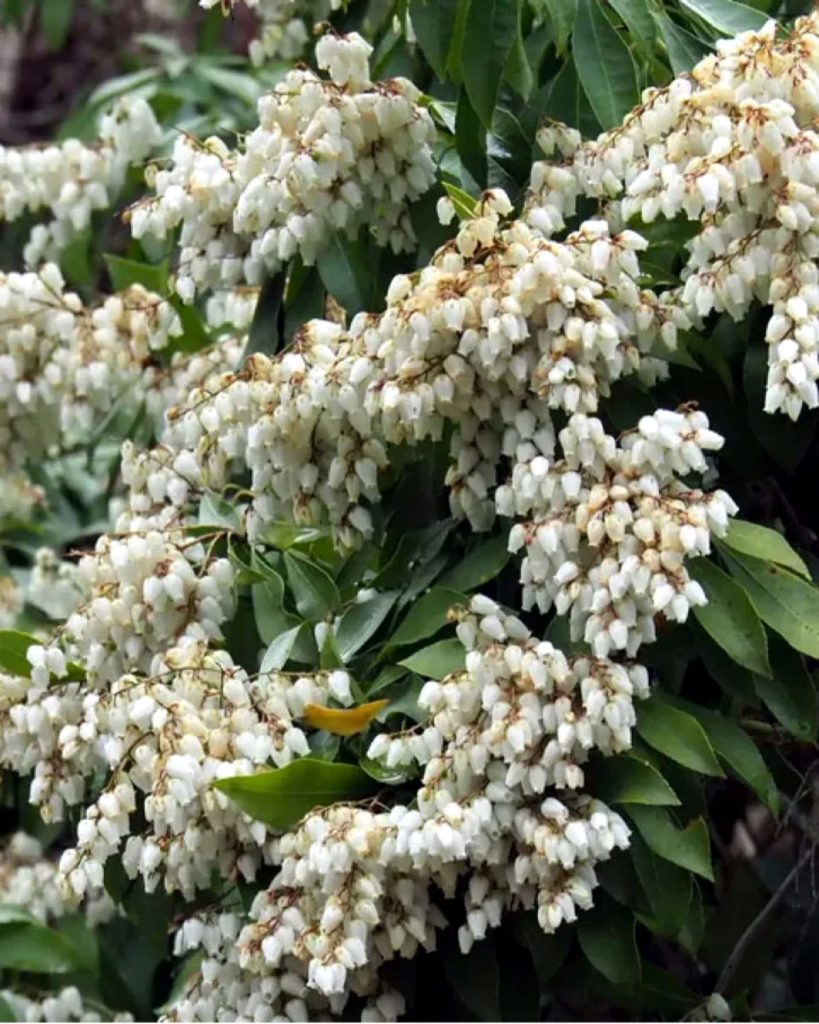
The flowers of Asebi are now ringing with bells around Tobihino in Nara Park. There are hardly any shrubs other than Asebi in Nara Park because the deer mostly consume leaves within their reach. However, even the voracious deer refrain from eating Asebi due to its toxic components. This explains the abundance of Asebi in Nara Park. Asebi, written in kanji as “馬酔木” (literally “horse intoxication tree”), derives its name from the fact that horses, when they consume its leaves, suffer from poisoning and stagger as if intoxicated. While extracts from pieris leaves were once used as insecticides due to their toxicity, pieris is now classified as a substance that “may pose a risk to crops, livestock, aquatic plants and animals depending on the amount and concentration of use” and is prohibited from being imported, manufactured, sold, or used as pesticides. Asebi has been a familiar tree to the Japanese people since ancient times, with ten poems dedicated to it in the “Manyoshu” anthology. Many of these poems express admiration for Asebi flowers, suggesting that Asebi was planted and admired in gardens until around the late Nara period when the Manyoshu was compiled.
奈良公園の飛火野の周りには今アセビの花が鈴なりです。奈良公園にはアセビ以外の低木がほとんどありません。これは鹿が首が届く範囲の葉をほとんど食べてしまうからです。しかしアセビには有毒成分が含まれているので、さすがの大食漢の鹿も食べません。奈良公園にアセビが多い理由です。アセビは漢字で「馬酔木」と書き、葉に有毒成分が含まれることから、馬が葉を食べると毒に当たって苦しみ、酔うが如くにふらつくようになる木というところからついたとされます。アセビが有毒植物である事を利用して、その葉を煎じたものは 殺虫剤としていっ時使われていた事がありますが、現在はアセビは「資材の原材料に照らし使用量や濃度によっては農作物等、人畜及び水産動植物に害を及ぼすおそれがあるもの」に指定されており、農薬として輸入・製造・販売・使用する事が禁じられています。アセビは日本人が古くから親しんできた木で、『万葉集』にはアセビを詠んだ歌が10首あります。アセビの花を愛でた歌が多く、『万葉集』が成立した奈良時代末期ごろまでには、庭園にアセビが植栽されて観賞されていたとみられています。
